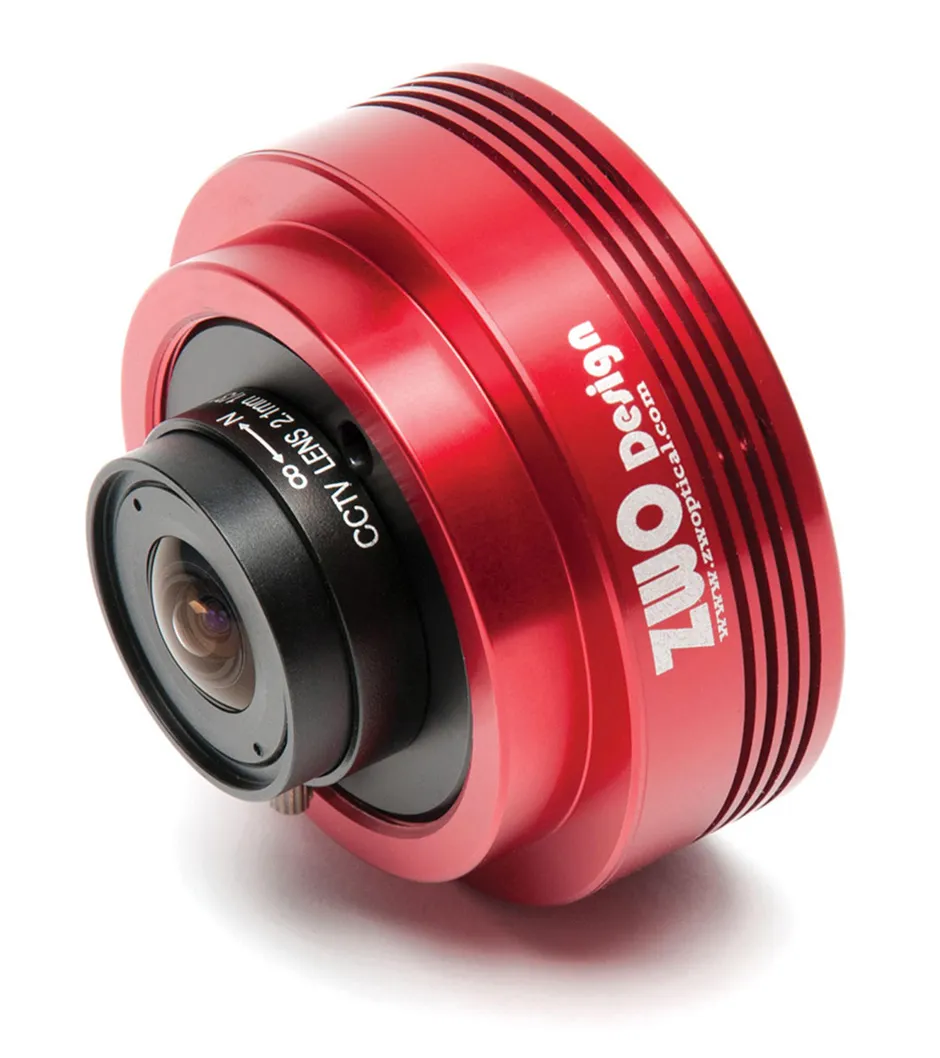Price: £249.00
Weight: 100g
Supplier: Teleskop Service
Telephone: 49 (0)89 1892870
Website: www.teleskop-express.de
The ZWO ASI120MM is a high frame rate monochrome camera, one of a growing band that permits both Solar System and deep-sky astrophotography.
With it you can image the Sun, the Moon and bright planets as well as nebulae, galaxies and clusters.
It is based around a 0.33-inch CMOS MT9M034 sensor, which has a native chip resolution of 1280x960 pixels (1.2 megapixels).
For Solar System work, the camera can operate at up to 215 frames per second (fps), albeit at the significantly reduced resolution setting of 320x240 pixels.
At full-resolution, the frame rate drops to 35fps.
The camera can be set to deliver images at many different resolutions.
It does this by defining a ‘region of interest’ rectangle on the main sensor.
Pixels outside of the rectangle are ignored and the camera’s data transfer requirements are lessened.
Using a region of interest means that a smaller than maximum view is captured.
To set up the camera, you’ll need to visit the ZWO website – the ASI120MM ships without control software or drivers.
The software download also includes a rudimentary capture program, which we found a bit primitive for serious imaging.
However, the camera supports third-party programs including the excellent freeware FireCapture and SharpCap.
Both are very competent, but we did encounter some freezing issues using the ASI120MM with FireCapture.
Our main tests were carried out using SharpCap.

Ready to go
So long as you have internet access, setup is pretty painless and we were up and running in no time.
After connecting the camera to our laptop for the first time we were startled to see ourselves on the computer screen – the ASI120MM comes with its own wide-angle (150º), 2.1mm focal length CCTV lens pre-fitted.
The excellent camera sensitivity is a good match for this lens, and even with a bright Moon in the sky we could see many stars and follow faint satellites with ease.
The camera body is T-threaded and it’s a simple job to swap the pre-fitted lens for the telescope adaptor or to leave the front aperture open.
The external diameter of the aperture barrel is 2 inches, allowing it to be slid directly into a standard 2-inch fit eyepiece holder.
Fighting weeks of cloud, our clear test nights suffered from generally poor seeing.
However, the purpose of a high frame rate camera is to try and overcome such issues, so we aimed our scope at the Moon nevertheless.
The camera actually did a very good job both at 1280x960-35fps and the faster 640x480-113fps setting.
Fine detail was visible in Crater Alphonsus under high illumination.
The dark pyroclastic fire-fountain markings stood out well, as did a thin sinuous rille running close to the crater rim.
Our shot of dark and moody Crater Clavius, meanwhile, was full of fine detail and good tonal variation.
Overall we were very impressed with the camera’s Solar System imaging capabilities.
The ASI120MM has an exposure range from 64 microseconds up to 1,000 seconds (16.67 minutes), opening up the possibility of deep-sky imaging.
Now, this isn’t going to compete with a dedicated 16-bit-plus cooled astronomical CCD camera, but the ASI120MM didn’t do a bad job here either.
It was also pretty simple to set up and operate.
We gave it a trial run on several enduring favourites, including globular cluster M13 in Hercules.
The results were crisp and revealed plenty of faint stars even when using relatively short exposures.
A degree of noise was evident from the non-actively cooled sensor, but this was easy to calibrate out during image processing using a dark frame.
The ASI120MM is a very sensitive, flexible and capable camera.
It’s an ideal beginner camera, whether you are interested in Solar System or deep-sky imaging, as it allows you to test the water in both camps.
For seasoned imagers, it’s a great device to have in your imaging toolbox and – with its 150ºCCTV lens – it’s a lot of fun to use too.
For the price, it is an absolute bargain.
